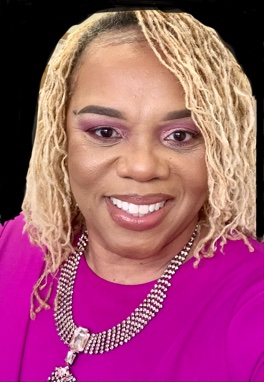Having equitable impact means overcoming the barriers we keep in place

izkes / iStock
This essay was previously published on the blog of Greater Public and has been republished here with permission.
As the new year rolls along in a blur, I seek opportunities to examine the education work I lead at WKAR Public Media at Michigan State University in East Lansing, Michigan. I question whether our education team is effective in meeting the mission to provide youth within our viewing region with equitable access to multimedia resources, direct learning engagements and innovative programming aimed to decrease socioeconomic disparities and the achievement gap. I believe this mission requires us to decenter whiteness and intentionally support marginalized communities and those who identify as Black, Indigenous, People of Color (BIPOC) without perpetuating separatist ideology or “othering.”
When I consider our impact on the youth we serve, I’m aware that good or even great work is not always equitable work. Honestly, we often simply don’t reach children of color because we establish or preserve barriers that prevent reach. These barriers include limited relationships within marginalized communities, a rush to produce instead of the patience to invest, and bias that excuses failures. This year, our station had a project that challenged us to disrupt inequities by owning these kinds of barriers as ours to eliminate, and embracing that increased opportunities are ours to create.
The project was a collaboration with Nova Science Studio, GBH and CPB that engaged area high-schoolers with science journalism and digital-short production education. To implement the program, WKAR agreed to identify potential school and youth media/journalism programs in our mid-Michigan region, launch an application process, and make three site selections. There was a strict timeline, but our cross-department team consisting of education, engagement, and communications was confident it could meet the deadlines. We had a network of schools we felt could manage the program requirements with ease because they had existing relationships with the station and had established award-winning high-school journalism programs. But we decided to promote the program to a wider pool of applicants for a broader, more diverse reach. I was proud of this decision, but aware it would require more work and time.
A broader candidate pool meant fielding more questions, offering reassurances, and meeting with various administrators to garner support and deepen their understanding of the program expectations. Time was ticking. However, our efforts led to the selection of a school within an urban school district, a school in a rural district, and a school in a suburban district, each with varying levels of diversity in student demographics. Our team celebrated the win. Full disclosure, I was most excited for the urban school selection because I taught in that district. I witnessed firsthand the limited opportunities students were provided as well as the inequities the district faced. I knew the Nova Science Studio program would provide an incredible opportunity for these students to solve local problems, address national concerns, and gain information, experiences, and resources not normally available to students in marginalized communities. However, the week before the program was to start, the teacher from the urban district informed us that he was leaving his position and could not lead the program as planned.
This announcement left our team scrambling to secure a third school in order to meet grant deliverables. Our immediate response was to select a school that had a well-established, award-winning media program that was well-connected to our station and university. An easy-breezy solution to our dilemma, or so it seemed. But what makes public media unique is that “media” is who we are. Therefore, I decided to look over the images and videos from the Nova Science Studio pilot program in Boston. I was shocked to see a majority of young Black and brown faces. If program administrators in Boston could get beyond that city’s strong history of school and community segregation to fully engage BIPOC participants, how could we give up on our quest to do the same?
I knew our initial decision would not offer many BIPOC youth an opportunity to experience this amazing program. I knew we could do better if we worked harder to engage with the original urban district to find a replacement school. Disrupting the easy solution felt more like equity to me. I needed our team to be intentional about fostering a culture of equity.
We weighed the pros and cons of continuing the search and working with an under-resourced school for the program. The team realized this was risky. The program start date was looming, and funding was predicated on meeting deliverables in a timely manner. Sponsoring a school with limited to no experience in this area meant recruitment for student participants might not result in the numbers needed. Another risk included whether the school would be able to complete the yearlong program, because marginalized districts are faced with constant staffing issues, overcrowded schedules and student transitions.
After more discussion and established guidelines from Nova, including a firm date for when the search needed to be complete, our team recommitted to finding a school that would benefit most from this opportunity. I went back to the urban district I’d worked for and connected with my son’s high-school principal. Funny side note here: I struggle with bringing my network to the table for opportunities, even though I see my white colleagues do this often. In reflecting on why, I think it’s because I’m conditioned to believe my network has limited value for the broader community. In my recent reading of Ibram X. Kendi’s book How to Be an Antiracist, I relearned that this is what racism does. “Racist ideas make people of color think less of themselves, which makes them more vulnerable to racist ideas” — like my network isn’t worthy of opportunities or is perceived as claiming another handout. I continue to process how to disrupt these perceptions.
The relationship with my son’s principal placed us on the right path, but our station’s extensive work to establish relationships over years with this school’s district made a huge impact also. WKAR was an established, trusted partner in the work to educate and connect resources to their students. The principal knew our value and could trust our track record. More importantly, the principal visualized how this program could help him expand the school’s curriculum to create a permanent media class for his very capable and worthy students, despite the school’s reputation for low standardized test scores. This reputation is not due to a fault of their own making but to racist policies that have systematically and historically provided inadequate state funding, teacher recruitment and retention support, creating a forced “failure” that results in school closures and emergency takeovers. Kendi affirms this truth in How to Be an Antiracist when he writes, “One either believes problems are rooted in groups of people, as a racist, or locates the roots of problems in power and policies, as an antiracist.”

Once the school was chosen, the realities of working with an under-resourced, underfunded, and understaffed school became apparent. Our team needed to advocate for numerous deadline extensions. We arranged numerous Zoom meetings; restructured timelines; pitched a whole day to high-schoolers in-person; provided more than 250 cookies, 90 oranges, and a video presentation; and negotiated the cost of meal tickets for participants to have lunch after monthly studio visits. I relished the greater impact participants would experience when visiting a Big Ten university each month. Most students expressed how college wasn’t in their future, and I knew these visits could change this for many if not all. And it has. The ROI has been phenomenal. Every student in the program has shared with me a commitment to attend college. They chatter about it over lunch in the university dining hall each visit.
Yet the biggest impact has been the gift WKAR received as we better understood how to exemplify a culture of equity.
Here are five strategies to maximize a commitment to equity:
- Assess your team’s culture of equity. ABLe Change and Michigan State University developed this organizational equity assessment tool to empower leaders to identify what is currently in place within their team. Equity does not mean equal. It should not be perceived as an ointment applied to heal a wound from harm, but a commitment to provide what is needed to advance access and opportunity for all and decrease harm.
- Evaluate whether your leaders are risk-averse or risk-takers when partnering with unserved and underserved communities. Set goals that lean toward being risk-takers and embrace the work that is required to close gaps. Challenge the notion that well-established programs will create a larger impact and provide greater station recognition. Many underserved communities are presented as inadequate based on systemic racism and bias. Be willing to discover the gems within every community.
- Check your individual and collective bias. A successful event with large community reach does not ensure that marginalized communities engaged in or benefited from the opportunity. A room full of white faces is not a success. Be willing to recognize that and work harder to invite others.
- Build and strengthen relationships using respect and creativity. Show up to work. Avoid being a “sage on the stage” and honor the knowledge and commitment that those experiencing marginalization bring by practicing global listening skills. Offer innovative programs that challenge and inspire.
- Use equity to define and message your organization values. Collaborate with your development and communication teams to craft impact stories that highlight your work with a community focus at the center. This creates a ripple effect with donors who value the same work and want to support it.
The Public Broadcasting Act of 1967 states that in order to serve the full American public, we must take “creative risks… that [address] the needs of unserved and underserved audiences, particularly children and minorities.” Our mission is to be disrupters of disparities. Let this reminder embolden our resolve to overcome barriers to access. They are ours to eliminate. Opportunity is ours to create.
Happy Learning,
Mrs. Pizzo
Robin Pizzo leads the education outreach efforts of WKAR Public Media at Michigan State University. She convenes partnerships and coordinates station initiatives such as WKAR Family and Ready To Learn to bring workshops, learning tools, and other resources into the community to help kids be resilient lifelong learners. Robin joined WKAR in January 2018. Prior to joining WKAR, she was Director/Student Success Coach at Lansing Community College.






